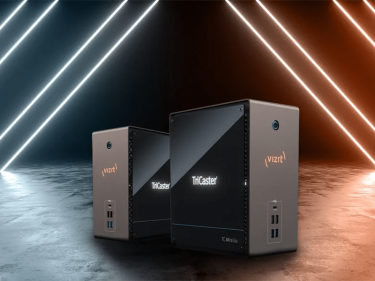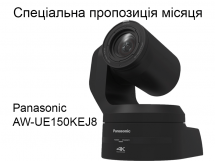| Українська | English | |||||||||||
|
|||||||||||
| News | About company | Service-centre | OB Van/SNG Rental | NextGen Energy Solutions | Contact us |
|
|
Engineering Service, Inc.
» News News A new Vizrt TriCaster Mini Go for streamers and content creators of all kinds pushes the entry level to the popular and production proven TriCaster system lower than ever. It offers USB, NDI and SRT connectivity, 4 inputs, 2 M/Es, and mix outputs at HD resolution. RedsharkNews had the chance to talk to Michael Hallén, president and CEO of Vizrt.
One of the first things we asked was about the statement in the press release at the start of the week when they announced the demise of NewTek, the bit that says: “To better meet the needs of end-users and customers, Vizrt will extend its product portfolio and launch a new entry-level video production system for streamers and content creators, and new cloud live production systems.” Is the Tricaster Mini Go the first entry in what might be a new ecosystem? “Yes,” he says simply. “The idea with this is obviously that it is an entry level TriCaster, but you can expand on it, and you can basically add stuff as you move forward. I think it's quite a tempting offering to have an entry level machine where you can add HTML 5 graphics and, as you grow, you add more advanced TriCaster functionality. But it's kind of a mission for us that we can start with the professional, fairly small streamer and stretch all the way to the higher end. That's a good vision to have. “We are expanding on the Tricaster family; not only at the entry level but also at the more advanced level; both ends,” he continues referencing the new cloud-based service and a pivot towards a subscription based business model. “Some customers want to get going but do not have the funds, but with this they can start small and they can grow. It's helping some customers get going quicker.” The subscription mode is an interesting one, but one that is normally more associated with smaller companies and individual users, not so much the large national broadcasters that Vizrt often deals with. “I think that most customers are expecting this to be the business model of the future,” says Hallén. “And yes, it will be a fairly long transition for some of the really big ones, but it is happening because it gives predictability in both directions; it gives predictability and flexibility for the customer to spin things up and down. And also it gives me visibility on my revenue stream as well. So it's good for everybody.” As for the future of NDI, unsurprisingly given that its adoption rates remain impressive across all industries not much is changing. “It's a different animal in many respects; it serves all customers in our various sectors, but it also serves video outside of broadcast and Pro AV is a bit of a different beast again,” says Hallén. “We are investing in NDI in many different ways so it stays up to date and accurate. And, based on customer feedback, we add various functions and features into it. But most of all we try to keep it stable and accessible and enjoy the continued high adoption rates.” « To the list of news |
|
|||||||||||||||||
 |
+38 (044) 593-18-20 +38 (073) 593-18-20 +38 (096) 532-96-82 +38 (095) 532-96-82 Service center Telegram @Engineer_Service |

|
|
|||||
 |
e-mail: engineer-service.tv 15 Vavylovykh str., Kiev, 04060, Ukraine Authorized service centre of Panasonic, Sony, JVC, Fujinon, Canon |
|||||||







